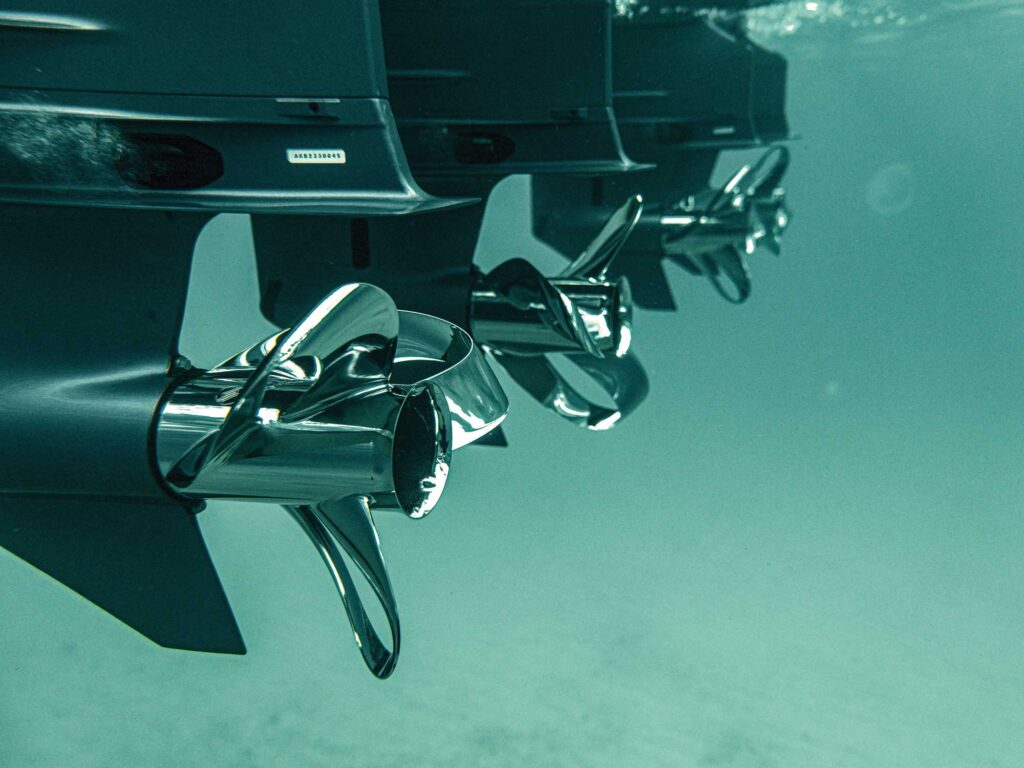
Few products foreshadow the shape of boating’s future like the Sharrow propeller. Its uniquely convoluted blade design resembles some mind-bending element of a Dali painting or, on a personal level, a nightmare from my high-school trigonometry class. Its ribbonlike looping blades have no tips, and its origins are as intriguing as its engineering.
The idea was born far removed from the world of saltwater fishing—in a symphony music hall. This is where film producer Greg Sharrow was trying to capture overhead video footage of an orchestra’s performance using a drone. But there was a problem: The drone’s buzzing propellers created noise that interfered with the musical performance.
Videography called for elimination of propeller noise generated by cavitation at the blade tips. Sharrow racked his brain to solve the problem. Eventually, it occurred to him that looping blades with no tips might quiet the noise. They did, and a new propeller design—the loop prop—took shape, but it still required years of engineering, testing and refinement to perfect the concept. Today the design is protected by multiple patents in the United States and overseas, and has found wide application in aerospace, unmanned aerial vehicles and commercial shipping.
The fishing-boat market has now become a major focus for the company, and the model Sharrow presents to anglers is called the MX. The boating industry responded favorably. In 2022, Boating magazine, our sister publication, awarded the design a Marine Power Innovation Award, and it received an NMMA Innovation Award in 2020.
The design aside, what are the benefits to boating anglers? The company claims it improves a boat’s efficiency and handling, and minimizes noise, as previously mentioned. To verify these claims, Boating pit a pair of Sharrow propellers against comparable-size traditional stainless-steel propellers on a Robalo R302 center-console powered by twin Yamaha F300 outboards.
While the props were fairly close in acceleration and top speed, the Sharrows really shined in propelling the boat to plane at a lower rpm, which in turn led to greater efficiency. For example, at 3,000 rpm with the Sharrows, the Robalo easily planed at a speed of 27.1 mph while recording noise levels of 80 decibels at the helm. With the traditional props, the boat struggled to stay on plane while recording a speed of 14.3 mph and 85 decibels.
The Sharrows proved 70 percent more efficient at 3,000 rpm, achieving 1.7 mpg at that speed. Traditional props achieved only 1 mpg at 3,000 rpm. The ability to plane at a lower speed can make a big difference in fuel economy in rough seas. In addition, the boat with the Sharrows felt smoother climbing to plane and didn’t slip during hard-over turns at 30 mph. It also proved more responsive at low speeds while docking.
This propeller technology is not cheap. An MX prop will run you about $5,000. Need two? Do the math. By comparison, a Yamaha Saltwater Series II three-blade stainless-steel prop starts at about $850. That means some traditional props are just 17 percent the cost of Sharrows. As with other new technologies, the cost of the props might decrease over time but will always be more than conventional props.
The higher price has not thwarted industry acceptance, as evidenced by Sharrow’s partnership with Yamaha Marine Precision Propellers, which will manufacture the props in its state-of-the-art foundry in Greenfield, Indiana. Yamaha will also offer Sharrow props through its boatbuilder and dealer distribution channels. In predicting the future of boating, Sharrow may well represent the shape of things to come.









